The Vietnamese Native Dog, or “cho co”, is a naturally bred dog native to Vietnam, known for its excellent guarding abilities and beloved by the Vietnamese people. Let’s delve deeper into the origins, characteristics, and care of this unique breed, as well as explore their price range in the article below.
1. Uncovering the Secrets of the Cho Co Dog
The Origins of the Cho Co
The Cho Co, also affectionately known as the “house dog”, “native dog”, “black dog”, or “hound”, is a Vietnamese native dog breed with a rich history. These dogs first appeared in Vietnam over 6,000 years ago and were naturally bred by our ancestors, becoming an integral part of the local lifestyle.
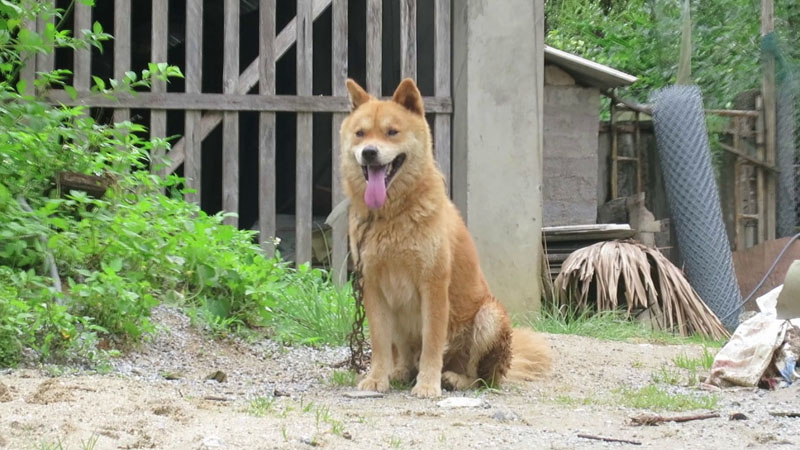 Cho Co – Vietnam’s Purebred Dog
Cho Co – Vietnam’s Purebred Dog
This purebred dog is easily adaptable, non-aggressive, and prevalent in Vietnam. Some even speculate that the northern native dogs may have descended from red wolves, while their southern counterparts could have originated from the Phu Quoc Ridgeback dog.
Classifying the Cho Co
There are four main types of Cho Co dogs in Vietnam: the Lai Dog, the Hmong Bobtail Dog, the Bac Ha Dog, and the Phu Quoc Dog.
Lai Dog
The Lai Dog, also known as the Dong Duong Dingo, is a renowned hunting dog in Vietnam. Its origins remain unclear, but it is most commonly found in the lower Ma River region of Thanh Hoa province. Standing tall at 43-66cm, the Lai Dog sports distinctive white “sock” markings on its sturdy legs. Renowned for their intelligence, courage, and loyalty, these dogs excel at hunting and are favored by mountain families for their guarding abilities.
 Lai Dog
Lai Dog
Hmong Bobtail Dog
The Hmong Bobtail Dog is an ancient and highly skilled hunting dog of the Vietnamese people. With its enduring stamina, agility, and strength, this dog is well-suited for guarding homes or accompanying hunters on their expeditions. Most Hmong dogs have no tail or a very short one, a large head, and a robust physique. Their sharp, sturdy fangs enable them to swiftly take down their prey.
 Hmong Bobtail Dog
Hmong Bobtail Dog
Bac Ha Dog
The Bac Ha Dog, also known as the “Xom” dog, is considered one of the most beautiful Vietnamese dog breeds. They come in a variety of colors, including white, black, and yellow, with the rare red-fawn color being highly prized. These dogs are intelligent, disciplined, and obedient, responding only to their owner’s commands. Unlike other hunting dogs, the Bac Ha Dog is calm and wise, with a non-aggressive nature.
 Bac Ha Dog
Bac Ha Dog
Phu Quoc Dog
The Phu Quoc Dog is Vietnam’s signature dog breed, believed to have descended from dogs brought by the French to Phu Quoc Island. Their distinct physical trait is a ridge of hair running from the shoulders to the hips. They are excellent swimmers with webbed feet, known for their gentle nature, loyalty, and exceptional hunting and running abilities.
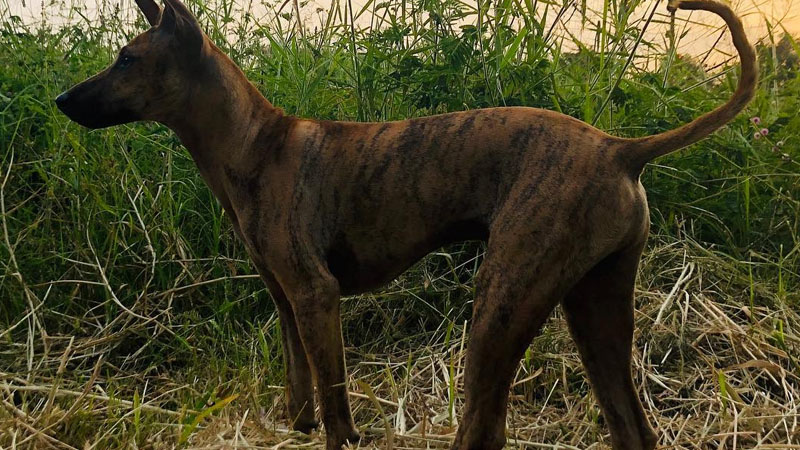 Phu Quoc Dog
Phu Quoc Dog
Coat Colors of the Cho Co
The Cho Co dog boasts a diverse range of coat colors, with black, brown, and yellow being the most common. The rare red-fawn color is occasionally seen in Bac Ha dogs. Their coats are typically short, with soft fur that moults as they mature.
 Cho Co Dogs Come in a Variety of Coat Colors
Cho Co Dogs Come in a Variety of Coat Colors
Physical Characteristics of the Cho Co
Size
Cho Co dogs are typically small to medium in size. Adult Cho Co dogs can vary in height and weight, with a shoulder height ranging from 45-65cm and a weight of 10-25kg. Female Cho Co dogs tend to be smaller than their male counterparts.
Body Shape
Cho Co dogs have well-proportioned bodies with a tall, slender build, rarely becoming obese. Their bodies are muscular and fit, adapted for guarding and hunting. They have a rectangular, straight back, small feet, parallel legs, and a crescent-shaped tail.
 Physical Characteristics of the Cho Co
Physical Characteristics of the Cho Co
Their heads are slender and triangular, resembling a wolf’s, with a flat forehead. Their muzzles form a V-shape, with a slightly pointed snout. Their noses are black, and their tongues may be pink or pink with black spots. Their ears are of moderate size, usually drooping but alert and perky when they hear sounds or sense movement.
Personality Traits
Obedient, Loyal, and Affectionate
Cho Co dogs are obedient, loyal, and affectionate towards their owners. They are quick to learn from their mistakes and respond well to reprimands. Unlike foreign dog breeds, they do not have a habit of destroying furniture or other belongings.
 Personality Traits of the Cho Co
Personality Traits of the Cho Co
Intelligence
Despite being house dogs, Cho Co dogs are incredibly intelligent and quick learners. With minimal training, they can understand commands, fetch items, or even assist their owners in selling goods.
Loyalty
Cho Co dogs are fiercely loyal and will go to great lengths to return to their owners if they ever get lost, abandoned, or captured. They may even wait patiently in familiar places for days, hoping to be reunited with their beloved owners.
 Cho Co Dogs are Affectionate, Loyal, and Well-Behaved
Cho Co Dogs are Affectionate, Loyal, and Well-Behaved
Emotional Depth
Cho Co dogs are incredibly affectionate and love spending time with their owners, whether it’s during meals, on walks, or simply relaxing at home. They thrive on human interaction and can playfully engage with their owners for hours on end.
Reasons to Adopt a Cho Co Dog
Attractive Appearance
Cho Co puppies are adorable, and even as they mature, they retain their endearing qualities and gentle nature, capturing the hearts of many dog lovers.
Robust Health and Easy Care
Cho Co dogs are the easiest to care for among all dog breeds. Thanks to their natural selection and long history in Vietnam, they have excellent adaptability to the local climate and lifestyle. They have strong immune systems, robust health, and rarely fall ill. Additionally, Cho Co dogs are independent and well-behaved.
 Cho Co Dogs are Intelligent, Cute, and Easy to Care For
Cho Co Dogs are Intelligent, Cute, and Easy to Care For
Intelligence and Trainability
With proper training, these dogs can excel in hunting, protection, and even specialized tasks. Even as pets, they can be taught basic commands and good hygiene habits through gestures and actions.
2. Caring for Your Cho Co Dog
Feeding Your Cho Co
While Cho Co dogs can survive on a simple diet of white rice and broth, providing them with a well-balanced and nutritious diet will ensure their overall health and strengthen their immune system. These dogs are not picky eaters and will happily consume whatever their owners provide. Many families even feed them leftovers.
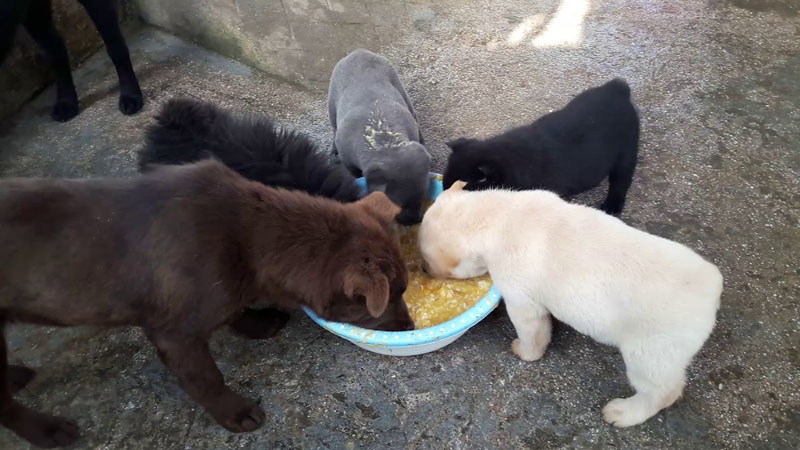 What Do Cho Co Dogs Eat?
What Do Cho Co Dogs Eat?
Nutritional Requirements by Life Stage
- Puppy Stage (Under 3 Months Old): During this stage, puppies should be fed solely on their mother’s milk or supplemented with fresh milk to ensure proper growth. Avoid giving them solid food as their digestive system is still developing.
- Adolescent Stage (Over 6 Months Old): You can start introducing solid food, such as cooked rice mixed with minced meat, along with additional nutrients like eggs, milk, and fish.
 Nutritional Requirements by Life Stage
Nutritional Requirements by Life Stage
- Adult Stage (Over 1 Year Old): At this stage, Cho Co dogs can consume most types of food. Include meat, fish, eggs, and vegetables in their diet as you would for yourself.
- Pregnancy Stage: If your Cho Co dog is pregnant, ensure she receives a nutritious diet with extra health-boosting foods and plenty of milk to support her and her future puppies.
Grooming and Hygiene for Your Cho Co
Cho Co dogs are quick to adapt to their environment and living conditions, so you don’t need to worry about their care as much as you would with foreign breeds.
For bathing, a weekly bath during the summer and a bath every 2-3 weeks in winter should suffice. Ensure you dry them thoroughly after bathing to prevent them from catching a cold. Regularly check and clean their ears to remove any dirt, bugs, or mites. Also, inspect their paws for ticks and fleas.
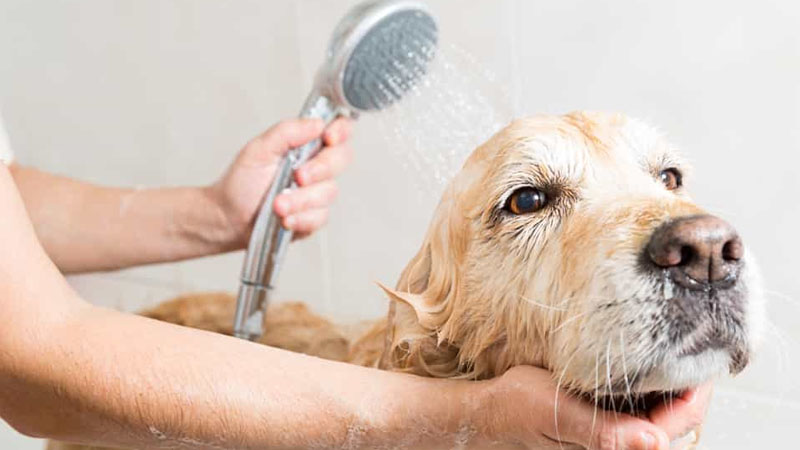 Grooming and Hygiene for Your Cho Co
Grooming and Hygiene for Your Cho Co
Provide them with a sheltered space to protect them from the elements, and clean their living area 2-3 times a week to minimize the risk of mange and prevent the proliferation of bugs and fleas.
Don’t forget to check out our comprehensive guide to caring for pet dogs for more helpful tips!
Common Health Issues in Cho Co Dogs
Rabies
Rabies is a serious concern for all dog breeds, and Cho Co dogs are no exception. Ensure your dog receives the necessary vaccinations to protect both your pet and your family. Rabies can cause central nervous system disorders, leading to madness and eventually death.
Canine Distemper
Canine Distemper is caused by the Canine Distemper Virus and is highly contagious, spreading through respiratory and digestive tracts.
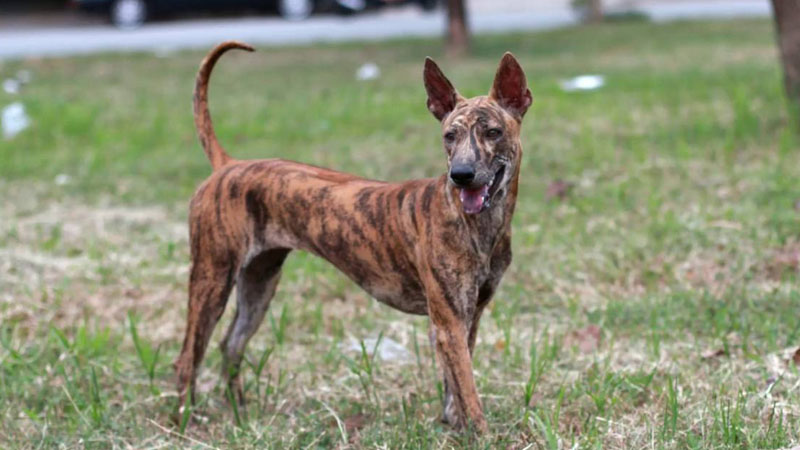 Common Health Issues in Cho Co Dogs
Common Health Issues in Cho Co Dogs
Acute Gastric and Intestinal Inflammation
This condition commonly affects puppies under one year old and is caused by hookworms, viruses, or bacteria. Symptoms include fever, loss of appetite, tremors, continuous vomiting, and diarrhea with mucus and foul-smelling stool
































